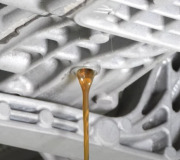This is a job for the specialists at a tire and alignment shop. They will start by looking for a broken belt in a tire. Those are not always obvious. Balancing them with a road-force balancer will also show up hard-to-find tire and wheel problems. They will also "read" the tire wear patterns for clues. Misalignment problems do not cause vibrations, but worn parts that PUT a wheel out of alignment can let that wheel shimmy back and forth. Ball joints are the most common offenders but worn struts, control arm bushings, and to a lesser extent, upper strut mounts can also let a wheel shift position rapidly. They will also look for rusted brake rotors and drums with large chunks that are missing, and worn or loose wheel bearings.
Worn and sloppy inner and outer tie rod ends also do not cause a shimmy on their own but they can fail to hold a wheel in the correct position while another worn part causes it to vibrate. That's where your mechanic will often find multiple worn parts.
Often a suspension and alignment expert will detect clues that others miss. Does the steering wheel shift position at times? Does the car pull one way all the time or intermittently? Does it pull one way when accelerating and the other way when braking? Does the steering wheel wiggle a little from side to side when the front end of the car goes up and down over bumps in the road? They can tell a lot by test driving the car and they'll know what to look for.
A worn inner cv joint housing on the front will cause a shimmy up to about 35 mph under acceleration. They don't typically cause a problem higher than that. This isn't so common with half shafts on the rear, like your car.
Given the age of the car, the alignment guys are going to look real closely at ride height. Springs get weak with age and let the car sit closer to the ground. When it is severe enough, that puts the suspension and steering system out of the designed geometry. Even though the wheels can be reset to correct alignment specs while standing still on the hoist, the tires will go through terribly incorrect movements while moving up and down on the road. No alignment in the world will correct the resulting tire wear until the springs are replaced. All tire shops have a guide that lists the required measurements, and show where those measurements must be taken on each car model. Many shops will sell you new tires but they will expressly revoke any warranty on them if ride height is not correct. Most published height specs allow about one inch of tolerance from the preferred values. On some vehicles, especially the Ford full-size vans, that one inch will cause an irritating vibration that few mechanics can solve.
Besides the tire wear issue related to ride height, the driveline geometry also changes quite a bit. That is fine tuned during the design of the car to eliminate any vibration. Sometimes there can be a really hard-to-diagnose problem AND the ride height can be incorrect. In those cases the mechanic will need to sell you new springs and an alignment first, then if the vibration is still there, he will have to start looking again, but with that first problem solved. This happens real often with a lot of different types of problems, and most reasonable people understand that need when it is explained properly to them. Unfortunately mechanics, like doctors, are real good at explaining things to other mechanics, but they lack the communication skills to explain it so car owners can understand. That is a big reason for the mistrust and undeserved bad reputation. If you run into that, we can help sort it out here. Often they need to solve known concerns first so they know they aren't related to your original complaint, but it makes it easier to take when you KNOW that ahead of time. Otherwise you're angry when the problem is still there after the first half of the service is done.
SPONSORED LINKS
Thursday, January 12th, 2012 AT 8:12 AM


